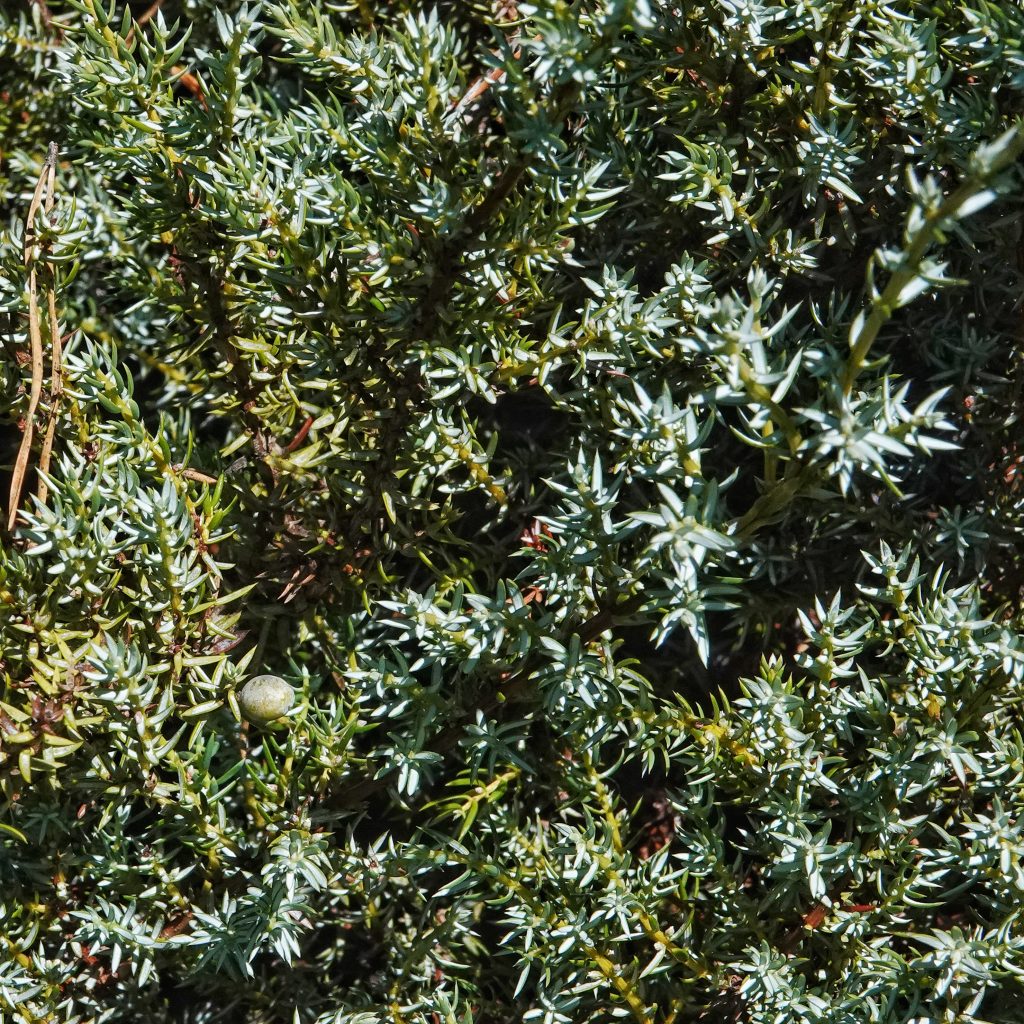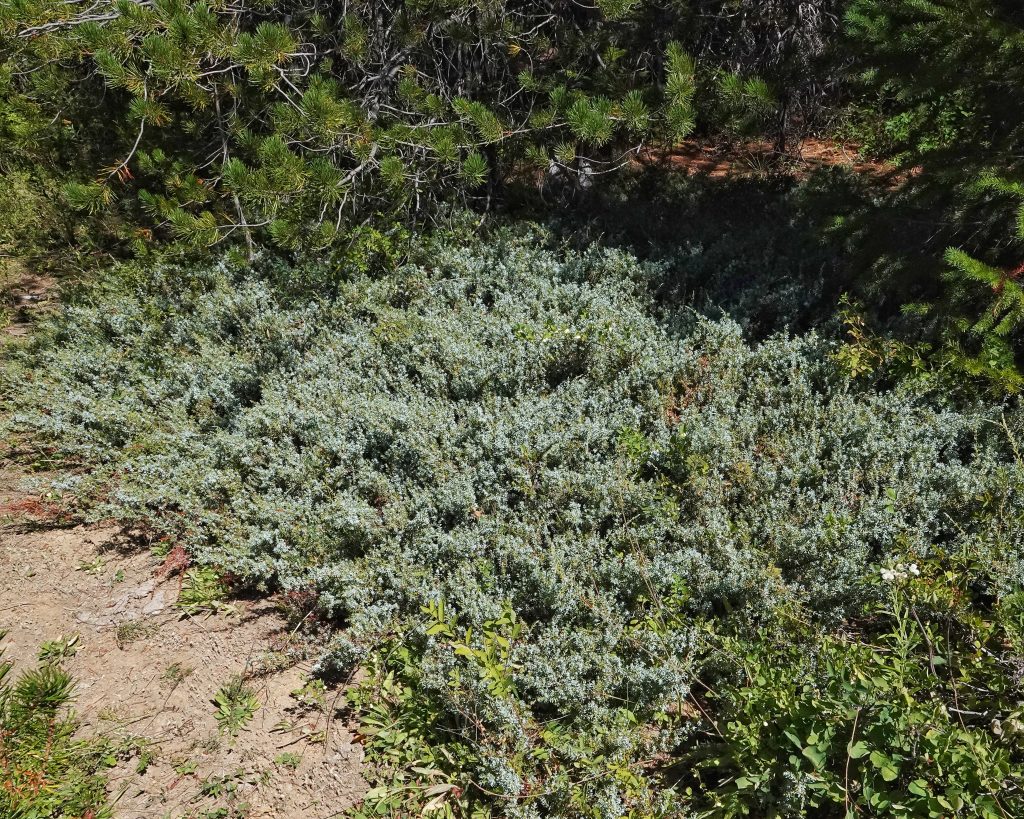
Next up on our tour of our native conifers is Juniperus communis (with the common names common juniper, dwarf juniper, and mountain juniper), the first member of the family Cupressaceae (which includes the cedars, cypresses, redwoods, and junipers) to be profiled on this site. Common juniper is probably the most accurate common name for this species, since it’s range is circumpolar in the Northern Hemisphere, extending as far south as the 30⁰ parallel in montane regions. This species has the largest native geographical range of any woody plant on earth.
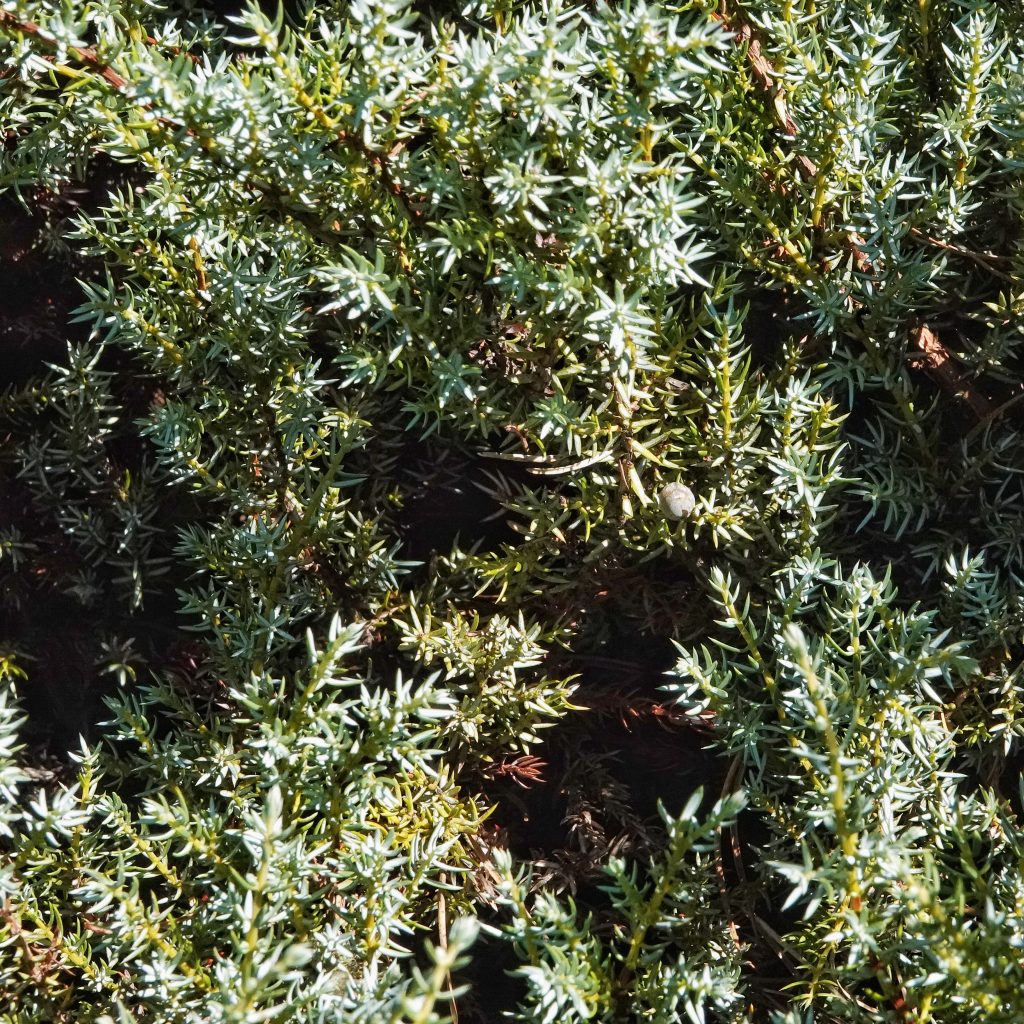
In the PNW, calling it dwarf juniper is also usually quite accurate, because the vast majority of our specimens grow in low mounds and shrubby patches. But there are trunked specimens that can be up to 10’ tall, though I’ve yet to see one. I am somewhat surprised that it doesn’t seem to be called needled juniper, since the awl-like leaves are quite distinctive, and all of the rest of our native junipers have scale-like leaves.
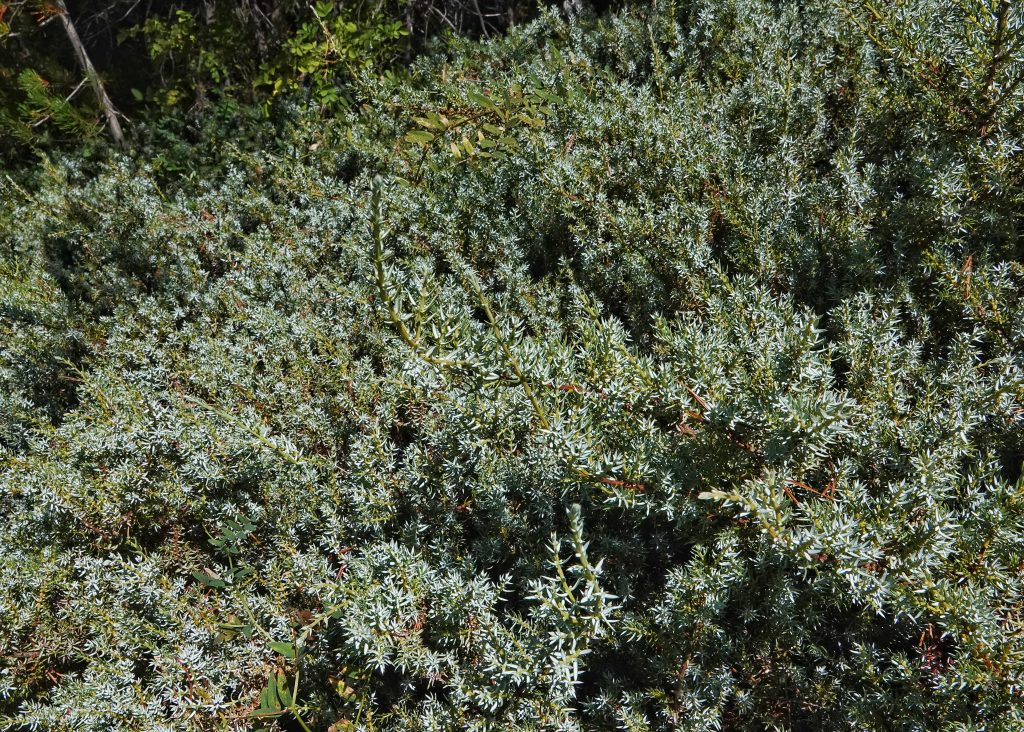
The fruit of junipers, while often called a berry, is technically a cone with fleshy and merged scales. Those from Juniperus communis are the ones most often used to flavor the alcoholic beverage known as gin, a word which comes from the similar words for juniper in French and Dutch. Old World peoples commonly used parts of this plant to flavor meats, sauerkraut, stuffing, etc. Herbalists worldwide have traditionally used various parts and decoctions to treat respiratory problems, stomach disorders, fevers, venereal diseases, and kidney troubles, although large amounts of the fruit can also cause kidney disease. For more on its use by indigenous peoples, see the 143 entries in the Native American Ethnobotany Database.
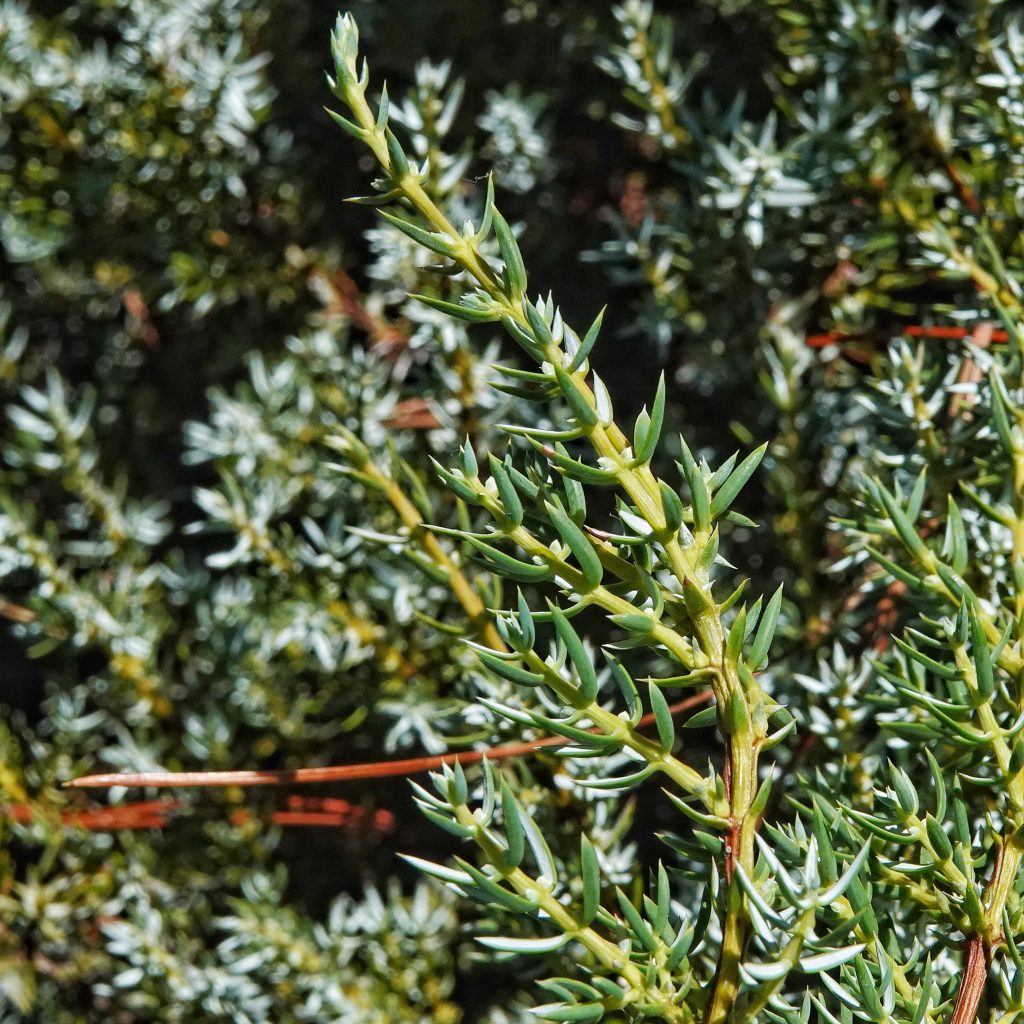
With its bi-colored leaves and green to blue cones, Juniperus communis is a handsome plant, albeit a spiky, one, and gets some love from the native plant landscapers, especially because it is drought and freeze resistant, and, being shade intolerant, is useful in full sun areas that would scorch many other plants. Though, because of that spikiness, for general landscaping purposes it is not as popular as many exotics. Still, as a cover for small animals, those awl-like needles add an extra layer of protection, beyond mere concealment. In natural settings it has low resistance to fire, and a limited seed bank, so regeneration can only come from surviving plants (Thomas et al.; 2007– This is also a great overview of this species, although somewhat technical).
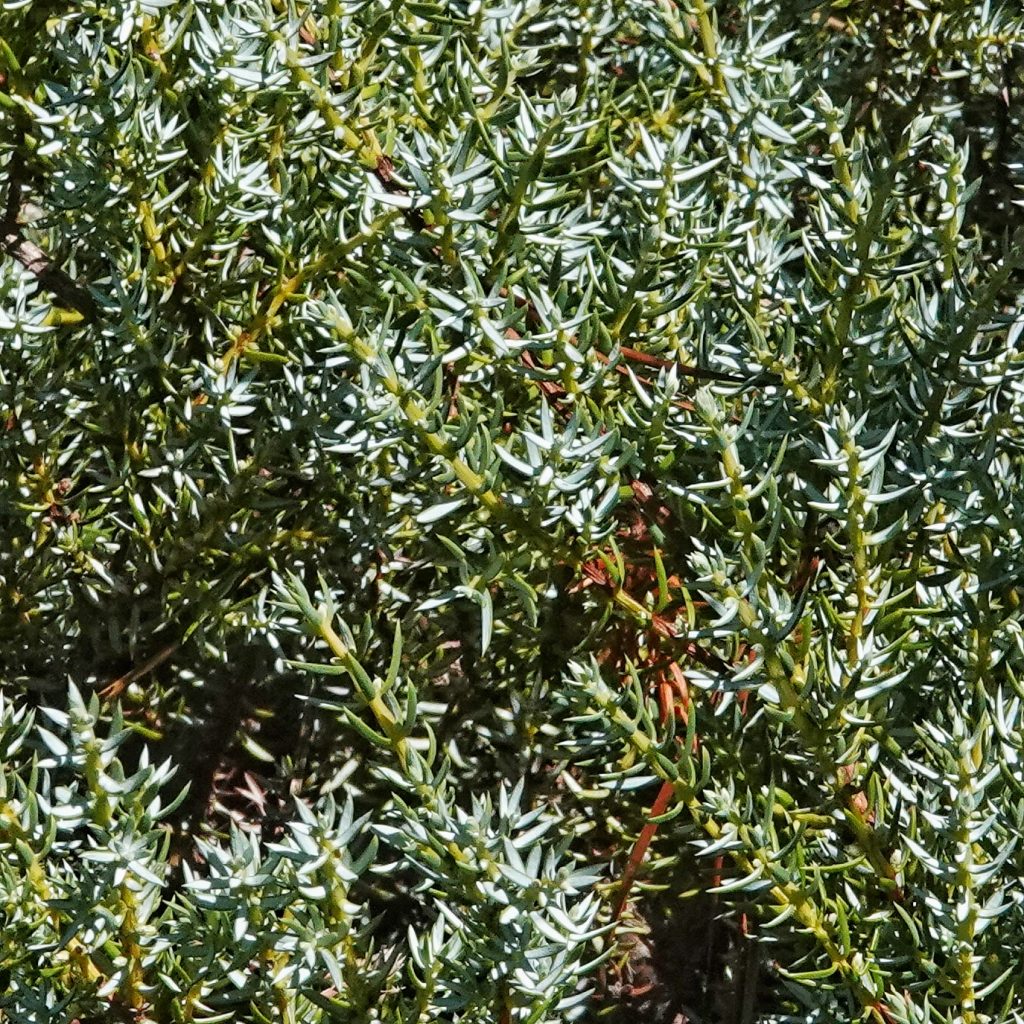
Description-In our region it is usually a low growing (less than 4’ tall) shrub, but can occasionally form trees up to 10’ tall; leaves are in whorls of three, evergreen, short (6-14mm long), stiff, sharp, awl-like, whitish dorsally because of stomatal bloom, and dark green below; bark is thin, scaly, peeling, and reddish brown; cones are sessile, green turning blue, and are formed in the leaf axils.
Similar species– Other junipers have scale-like leaves
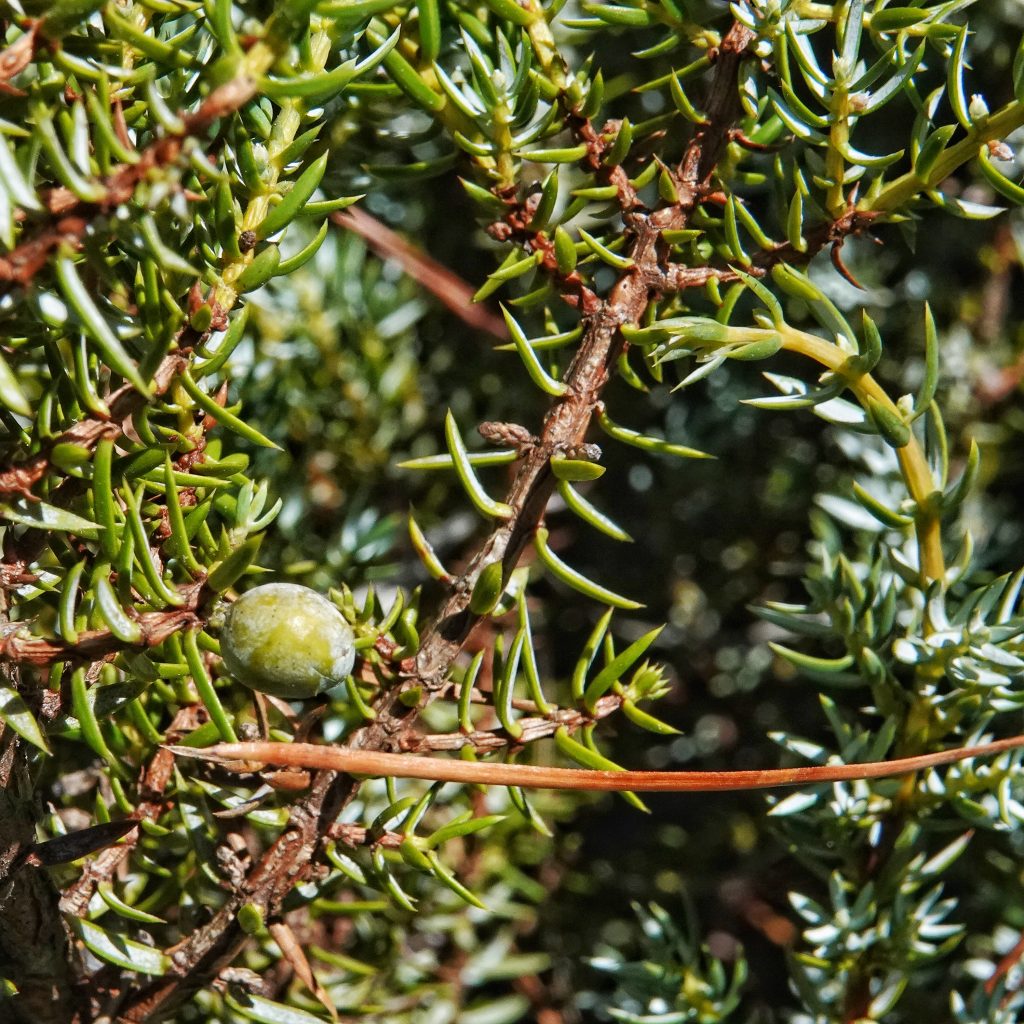
Habitat-Rocky slopes, open forests, coastal bluffs, balds; occasionally in low elevation bogs, mostly montane in our region
Range-Temperate Northern Hemisphere; found in our region in the Cascades, Olympics, Siskiyous, Rockies and its spur ranges, and in some lower elevation spots near the coast and around Puget Sound.
Reproductive timing-Cones take up to 18 months to mature, and usually ripen from June into September
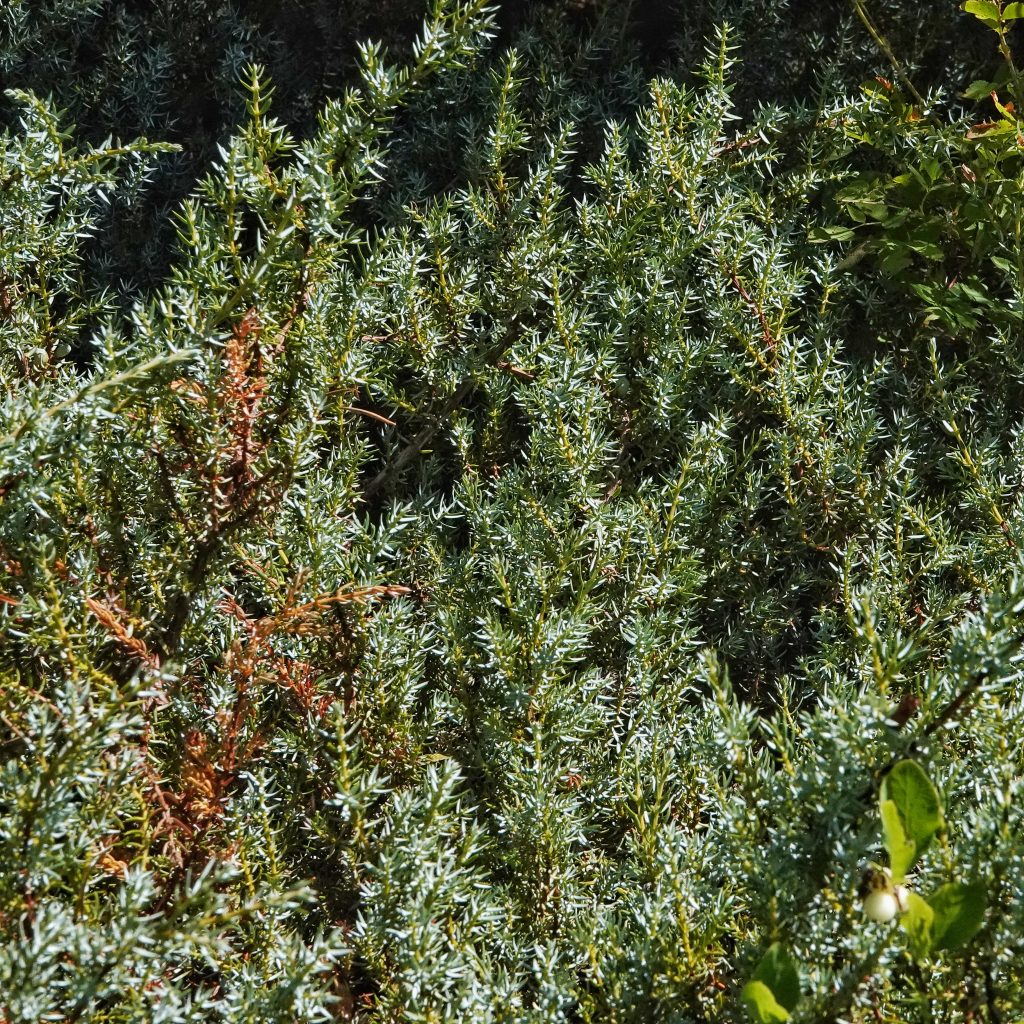
Eaten by-The stink bug Chlorochroa juniperina, and the leaf beetles Paria sexnotata and P. canella; utilized by larvae of the moths Eupithecia interruptofasciata, E. intricata, E. miserulata, Dichomeris marginella, and probably by some leaf mining moths in the genera Coleotechnites and Argyresthia; deer, mountain goats, moose, caribou, and hares browse the foliage, although it’s usually in late winter/early spring when better forage isn’t available; grouse, wild turkeys, American Robins, Western Tanagers, Black-capped Chickadees, Cedar Waxwings, and other frugivorous birds consume the ‘berries’, as do squirrels, mice, voles, and chipmunks.
Etymology of names– Juniperus is the Latin word for the junipers. The specific epithet communis is from the Latin word for ‘common’, which is appropriate since it has a Holarctic distribution.
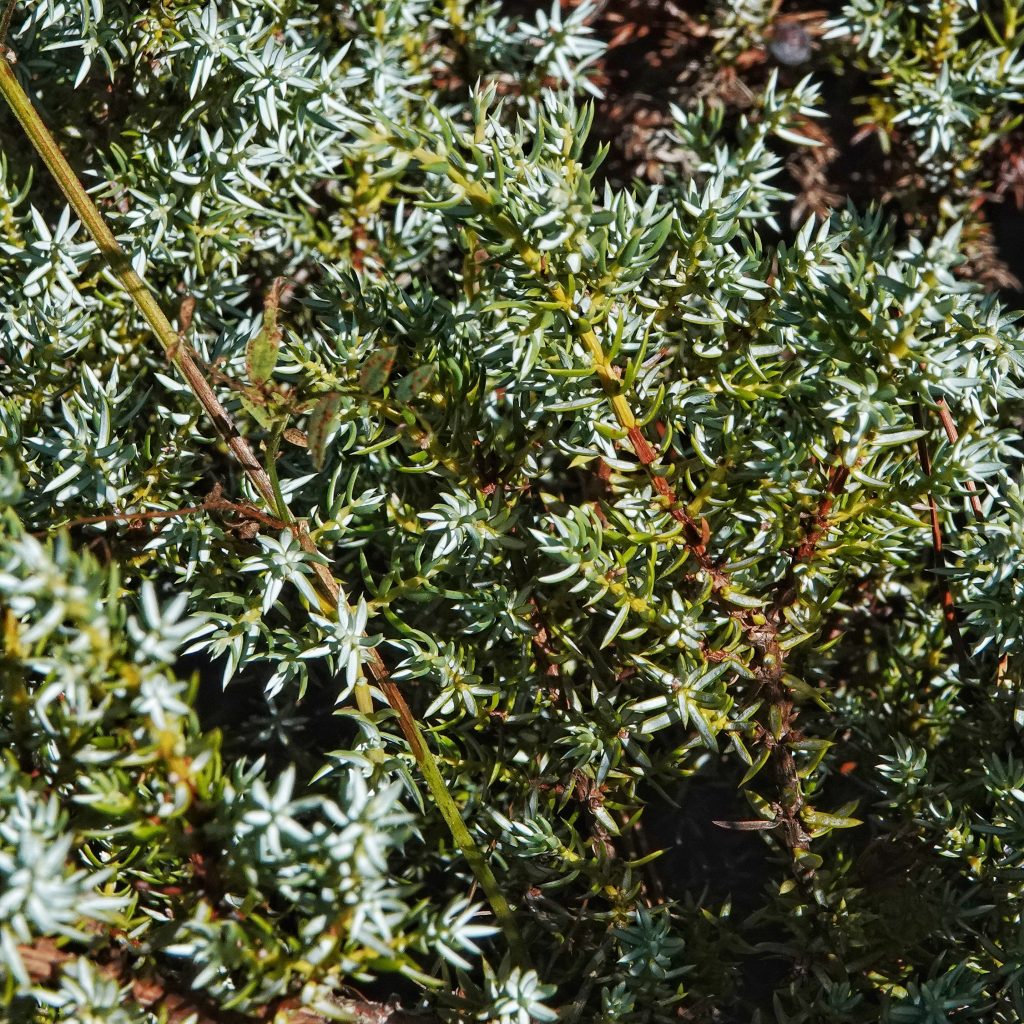
OregonFlora Juniperus communis
http://nativeplantspnw.com/common-juniper-juniperus-communis/
BRIT – Native American Ethnobotany Database
https://conifersociety.org/conifers/juniperus-communis
Juniperus communis in Flora of North America @ efloras.org
Juniperus communis (common juniper) description
https://pfaf.org/user/Plant.aspx?LatinName=Juniperus+communis
Burke Herbarium Image Collection
